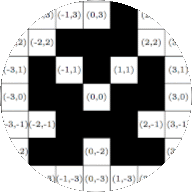Skip to main content Contents Index Prev Up Next \(\newcommand{\longdivision}[2]{#1\big)\!\!\overline{\;#2}}
\newcommand{\mlongdivision}[2]{\longdivision{#1}{#2}}
\renewcommand{\emptyset}{\{\}}
\newcommand{\blanksp}{\underline{\hspace{.25in}}}
\newcommand{\set}[1]{\left\{#1\right\}}
\newcommand{\cspace}{-}
\newcommand{\Ta}{\mathtt{a}}
\newcommand{\Tb}{\mathtt{b}}
\newcommand{\Tc}{\mathtt{c}}
\newcommand{\Td}{\mathtt{d}}
\newcommand{\Te}{\mathtt{e}}
\newcommand{\Tf}{\mathtt{f}}
\newcommand{\Tg}{\mathtt{g}}
\newcommand{\Th}{\mathtt{h}}
\newcommand{\Ti}{\mathtt{i}}
\newcommand{\Tj}{\mathtt{j}}
\newcommand{\Tk}{\mathtt{k}}
\newcommand{\Tl}{\mathtt{l}}
\newcommand{\Tm}{\mathtt{m}}
\newcommand{\Tn}{\mathtt{n}}
\newcommand{\To}{\mathtt{o}}
\newcommand{\Tp}{\mathtt{p}}
\newcommand{\Tq}{\mathtt{q}}
\newcommand{\Tr}{\mathtt{r}}
\newcommand{\Ts}{\mathtt{s}}
\newcommand{\Tt}{\mathtt{t}}
\newcommand{\Tu}{\mathtt{u}}
\newcommand{\Tv}{\mathtt{v}}
\newcommand{\Tw}{\mathtt{w}}
\newcommand{\Tx}{\mathtt{x}}
\newcommand{\Ty}{\mathtt{y}}
\newcommand{\Tz}{\mathtt{z}}
\newcommand{\So}{\Tf}
\newcommand{\Sno}{\Tg}
\newcommand{\Si}{\Th}
\newcommand{\Sni}{\Tj}
\newcommand{\N}{\mathbb{N}}
\newcommand{\Z}{\mathbb{Z}}
\newcommand{\W}{\mathbb{W}}
\newcommand{\ZZ}{\Z}
\newcommand{\PP}{\mathbb{P}}
\newcommand{\Q}{\mathbb{Q}}
\newcommand{\R}{\mathbb{R}}
\newcommand{\RR}{\R}
\newcommand{\F}{\mathbb{F}}
\newcommand{\A}{\mathbb{A}}
\newcommand{\abs}[1]{|#1|}
\newcommand{\fmod}{\bmod}
\newcommand{\fdiv}{\,\mathrm{div}\,}
\newcommand{\lcm}{\mathrm{lcm}}
\newcommand{\id}{\mathrm{id}}
\newcommand{\nr}[1]{\##1}
\newcommand{\gexp}[3]{#1^{#2 #3}}
\newcommand{\gexpp}[3]{\displaystyle\left(#1\right)^{#2 #3}}
\newcommand{\glog}[3]{\log_{#1}^{#3}#2}
\newcommand{\sol}[1]{{\color{blue}\textit{#1}}}
\newcommand{\gro}[1]{{\color{gray}#1}}
\newcommand{\todo}[1]{{\color{purple}TO DO: #1}}
\newcommand{\fixme}[1]{{\color{red}FIX ME: #1}}
\newcommand{\checkme}[1]{{\color{green}CHECK ME: #1}}
\newcommand{\degre}{^\circ}
\newcommand{\vect}[1]{\overrightarrow{#1}}
\newcommand{\nix}{}
\newcommand{\cox}[1]{\fcolorbox[HTML]{000000}{#1}{\phantom{M}}}
\newcommand{\tox}[1]{\texttt{\##1} \amp \cox{#1}}
\newcommand{\ttx}[1]{\texttt{\##1}}
\newcommand{\mox}[1]{\mathtt{\##1}}
\newcommand{\xx}{\mathtt{\#}}
\newcommand{\lt}{<}
\newcommand{\gt}{>}
\newcommand{\amp}{&}
\definecolor{fillinmathshade}{gray}{0.9}
\newcommand{\fillinmath}[1]{\mathchoice{\colorbox{fillinmathshade}{$\displaystyle \phantom{\,#1\,}$}}{\colorbox{fillinmathshade}{$\textstyle \phantom{\,#1\,}$}}{\colorbox{fillinmathshade}{$\scriptstyle \phantom{\,#1\,}$}}{\colorbox{fillinmathshade}{$\scriptscriptstyle\phantom{\,#1\,}$}}}
\)
Chapter 3 Division
Objectives
Compute quotients and remainders using the division algorithm.
Recognize the division algorithm and algorithms that compute only the quotients or remainders.
Compute quotients and remainders of larger numbers using a calculator.
Apply properties of the operation \(\fmod\text{.}\)
Apply the operation \(\fmod\) in real world problems.
Apply the operation \(\fmod\) in the validation of ISBN numbers.
Division yields the answer of the question
How often does a natural number \(b\) go into another natural number \(a\) ?
The answer to this question is called the quotient of the division of \(a\) by \(b\text{,}\) which we often denote by \(q\text{.}\) In this course we restrict our considerations to integers, so we only allow \(q\) to also have integer values.

